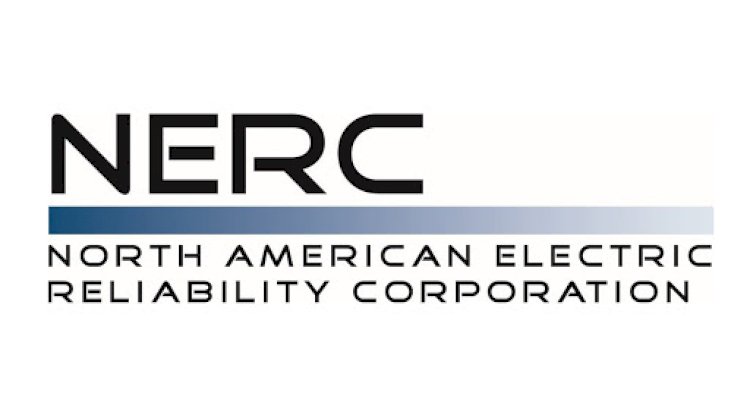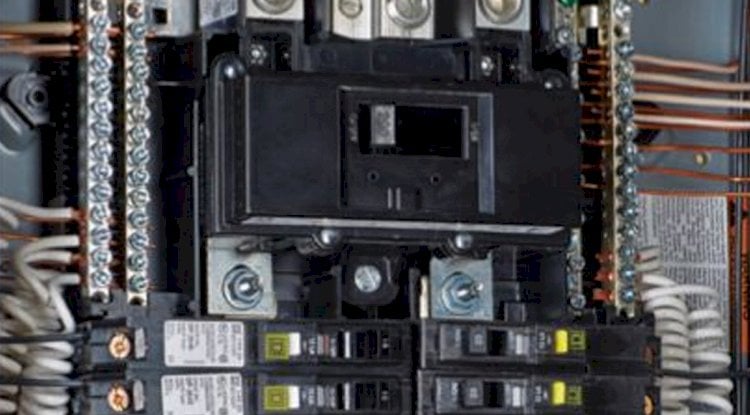What are the data deliverables for the NERC Geomagnetically-Induced Currents (GIC) Project?
Background
The North American Electric Reliability Corporation (NERC) is a not-for-profit international regulatory authority whose mission is to ensure the reliability of the Bulk-Power System (BPS) in North America.
NERC’s Geomagnetic Disturbance Task Force has called upon the stakeholders, owners, and operators of North America’s power system to provide specific geoelectric field values (data) about their facilities for input into a nation-wide study as part of the assessment of geomagnetic disturbances (GMDs) and their impacts on the Bulk-Power System.
A geomagnetic disturbance or geomagnetic storm is a temporary disturbance of the Earth’s magnetosphere caused by solar activity from the sun, such as solar wind, sunspots, solar flares, and coronal mass ejections that interacts with the Earth’s magnetic field.

Earth’s Magnetosphere – Courtesy of Wikipedia
The NERC Geomagnetically-Induced Currents (GIC) Project will determine how the Geomagnetically-Induced Currents (GIC) generated from the sun, could damage North America’s BPS due to a severe 1‐in‐100 year GMD event.
One of the primary mathematical components of the NERC GIC project is the actual resistance-to-ground and impedance-to-ground of the power generation facility or substation. Default ground resistance values are not being accepted by NERC.
NERC Deliverables
The deliverables requested by NERC include the following:
- 1D Resistivity Soil Model that includes calculated resistivities with depths, for each site
- Resistance-to-ground of the facilities below-grade grounding (earthing) system,
- including both the magnitude and angle
- Including both summer and winter soil conditions
- Geographic location of the facility, including geomagnetic latitude and longitude
- Other basic information about each facility
Additional deliverables can be provided as requested by the individual power providers. It may be cost effective for some providers to incorporate this NERC project into their existing grounding safety projects in regards to 29 CFR 1910.269 App C human safety mandates.
The E&S methodology for gathering the required NERC data is also valuable for providing further analysis including:
- Thermal modeling of transformers
- Human safety step and touch voltage calculations
- Grounding system improvements
Over the course of the next few years, the NERC GIC project requirements are to be implemented for power generation and substation facilities of 220kV and higher, plus for some selected lower voltage facilities that are critical junctions for the Bulk-Power System (BPS). NERC’s area of responsibility spans the continental United States, most of Canada, and the northern portion of Baja California, Mexico. The North American BPS is divided into several assessment areas within the eight Regional Entity (RE) boundaries as follows:
- Florida Reliability Coordinating Council (FRCC)
- Midwest Reliability Organization (MRO)
- Northeast Power Coordinating Council (NPCC)
- Reliability First Corporation (RFC)
- SERC Reliability Corporation (SERC)
- Southwest Power Pool Regional Entity (SPP-RE)
- Texas Reliability Entity (TRE)
- Western Electric Coordinating Council (WECC)

NERC Regional Entity (RE) Boundaries
Please refer to the NERC “Application Guide for Computing Geomagnetically-Induced Current in the Bulk-Power System” dated December 2013.
Why is resistance-to-ground and impedance-to-ground so important?
When a geomagnetic disturbance (GMD) or solar storm occurs, massive amounts of electrical energy will enter in to the earth’s magnetosphere. All forms of metallic objects around the planet will become charged, including overhead power lines, transmission lines, and transformers. As you can see from the simplified drawing below, the GMD event will induce a voltage into the power lines, causing potentially hazardous currents to flow through the electrical system. These hazardous currents come up from the earth through the grounding system and into the transformers and out to the rest of the circuit. The grounding system also provides the means for the excess currents to leave the circuit. Needless to say, the grounding system is very important to the NERC GIC study.

Simplified NERC GIC Circuit
The following diagram presents an example of a simplified NERC GIC DC-equivalent circuit with three substations. The variables used below include:
• The induced voltages on the transmission lines are represented by VL
• The resistance of the transmission lines is represented by RL
• RC and RS represent the resistances of the common and series segments of an autotransformer coil
• RT represents the resistance of the transformer coils
• I represents the resulting GIC current flowing from one substation to another
• RG represents the resistance-to-ground at each substation
Both the resistance of the transmission lines and the resistance of the transformers is divided by 3 because the three phases are wired in parallel for the DC-equivalent circuit. As you can see, the resistance-to-ground (RG) of the substations’ grounding systems is one of the primary factors in determining the magnitude of the induced current in each transmission line. Then, the quasi-DC current can cause thermal events in the transformers. The importance of the resistance-to-ground measurement is why NERC will not accept estimated default ground resistance values, but has instead insisted upon actual resistance-to-ground values.

Simplified NERC GIC Schematic
How can the actual values for a stations resistance-to-ground and impedance-to-ground be obtained?
There are several ways to obtain the actual values of the resistance-to-ground and impedance-to-ground of your power generation facility or substation for the NERC GIC project. All of them involve on-site testing of some form or another.
In theory, the 3-point Fall-of-Potential (FOP) method is considered the gold standard of resistance-to-ground testing. Unfortunately, in practice, it has a number of limitations in the implementation of testing in real world applications, for example:
- Typically, it requires a station shut down
- Requires the isolation of the grounding system (i.e. “no external interconnections”)
- Removal of overhead ground wires
- Removal of incoming data lines
- Need raw open land (no buried metal objects or pipes) in two directions at 90 degrees for thousands of feet
- For accurate measurements, the probe distances must be 5x to 10x the maximum diagonal distance of the station’s grounding grid, which could be thousands of feet
- If the soil resistivity is not uniform, single-layer soil to a depth as least as deep as the station diagonal distance, then the “62% Rule” is no longer valid.
- Highly sophisticated equipment is required to measure impedance accurately
- Usually not possible to take measurement in built environments or urban locations
- Takes a team of technicians over multiple days to perform test
- Can costs tens of thousands of dollars
E&S Grounding Solutions has a better NERC-approved method for generating the required resistance-to-ground measurement that is much less expensive than the conventional method of Three-Point Fall of Potential and additionally provides the 1D soil resistivity model required by NERC.
E&S Grounding Solutions takes soil resistivity measurements conducted to Human-Safety Standards. Using the industry-leading CDEGS engineering software programs, E&S Grounding Solutions has developed an alternative method that is applicable for all power generation and substation facilities. Our method will provide the data requested by NERC for both summer and winter conditions and provide resistance-to-ground values within less than 5% error.
Methods Employed to Gather Requested Data
Best-practices methodologies will be used to gather the requested data.
Soil Resistivity Measurement
The test meter selected for this analysis is from Advanced Geosciences, Inc. It is a high-powered induced polarization (IP) and electrical resistivity instrument used for vertical electrical sounding (VES), profiling, and the four-pin Wenner (ASTM G57 and IEEE Std. 81) soil resistivity measurements.
Standard Wenner Four-Pin Test methods simply do not provide enough accuracy for the NERC GIC project. The soil resistivity measurement methods utilized by E&S complies with all Human-Safety Standards. It also complies with best-practices documents: IEEE Std. 81 “IEEE Guide for Measuring Earth Resistivity, Ground Impedance, and Earth Surface Potentials of a Grounding System” and Safe Engineering Services & technologies’ (SES’s) “Soil Measurement Specification” dated July 23, 2001.
1D Resistivity Soil Modeling
Soil Modeling will be conducted using the latest version (currently Version 16) of Safe Engineering Services & technologies’ CDEGS (Current Distribution, Electromagnetic Fields, Grounding and Soil Structure Analysis) software package with an unrestricted license of the RESAP Soil Resistivity Analysis module. This module allows an unlimited number of horizontal soil resistivity layers to be accurately calculated from the Wenner field data.
Additionally, when soil freezes, the resistivity of the top layers of soil can increase by an order of magnitude or more, thereby increasing the resistance of the stations grounding system. From this frost line calculation, a winter soil model is created with top layers that are more resistive than during the summer. Winter soil models, where applicable, will be calculated using the CDEGS Soil Model Manager program to ensure the most accurate winter model possible.
The NERC “Application Guide for Computing Geomagnetically-Induced Current in the Bulk-Power System” dated December 2013 used the same RESAP module of the CDEGS program to illustrate its 1D Resistivity Soil Model.
Resistance-to-Ground and Impedance-to-Ground of the Facility
When soil freezes, the resistivity of the earth can increase by an order of magnitude or more. With the majority of the stations’ grounding systems located within the frost line zone for many areas of the country, the resistance and impedance of the grid during winter can be far greater than during summer. Both the resistance and the impedance of the stations grounding system will be provided for both summer and winter soil conditions, along with both magnitude and angle.
Geographic Information
Both the geographic latitude and longitude and the geomagnetic latitude and longitude of the site shall be listed in the report for easy site location. Geomagnetic latitude is used in the prediction of the intensity of geomagnetically-induced currents from solar storms.
Geomagnetic Latitude and Longitude
While the earth’s geographic poles are located at the north and south geographic poles, earth’s magnetic poles are near, but not quite in, the same place as the geographic poles. Additionally, the geomagnetic poles tend to wander slowly over time, and thus the geomagnetic latitude, longitude, and equator will vary.
The NERC GIC project relies on geomagnetic latitude in its equations for understanding the magnitude of GMD’s on a given electrical system. Therefore, both geographic and geomagnetic latitude and longitude will be provided.

The Engineering Experts at E&S Grounding Solutions





